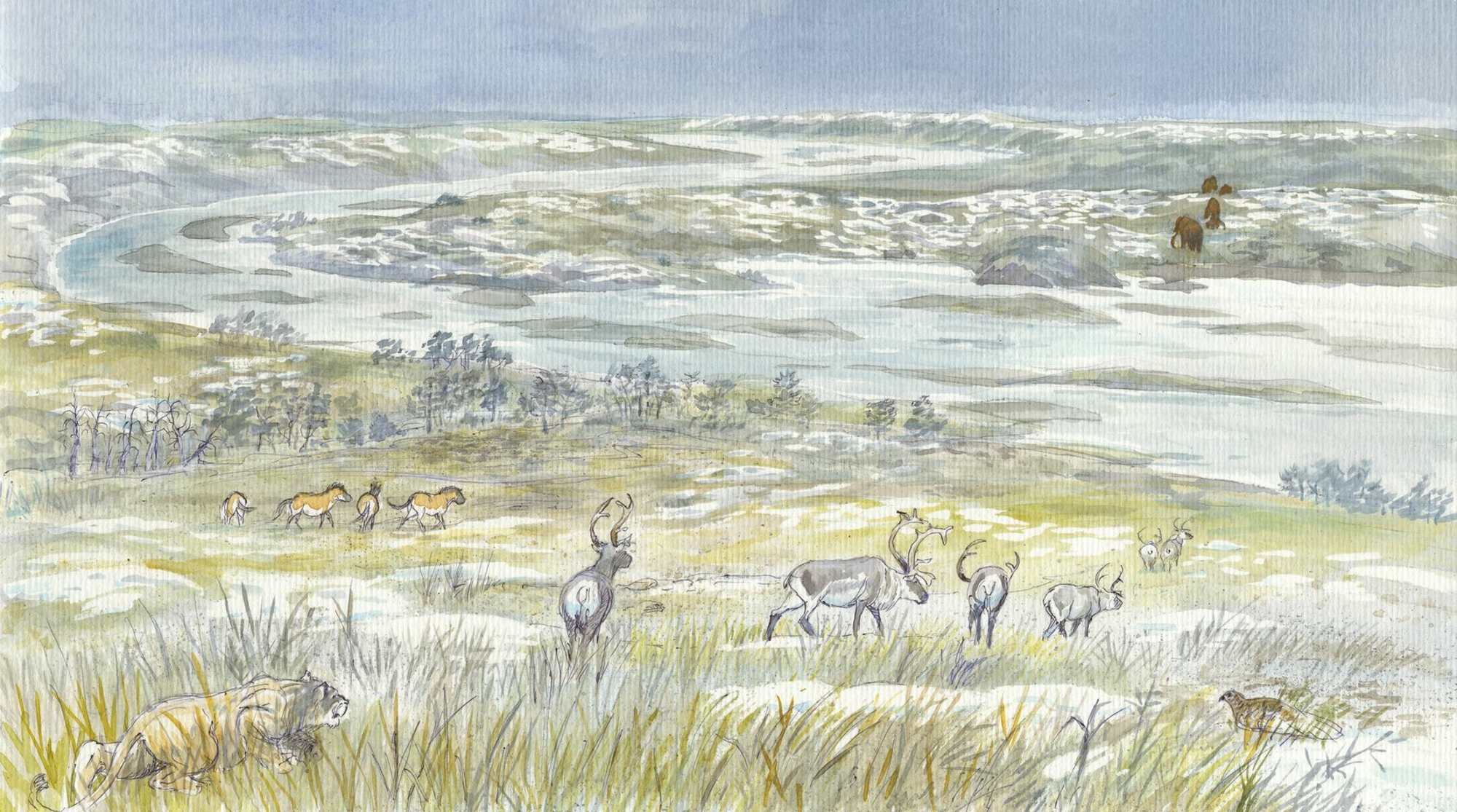
- Home
- Explore the site
- Historical and environmental context
- Climate and the environment
According to radiocarbon dating, the Late Magdalenian in the Paris Basin coincided with the first half of the Tardiglacial, a climatic phase that marked the passage from the coldest period of the last glacial to the Holocene, the temperate epoch we know today.
A climatic turning point
This Tardiglacial phase saw significant climatic oscillations between cold periods and at least two milder periods, each lasting for several centuries.
The relative imprecision of dating at Étiolles means we cannot yet determine if the Magdalenians lived in a cold or more temperate climate. We are trying to find this out using geology, in particular by looking for changes in sediments which may have been caused by the growth of vegetation during temperate periods.
Besides what they tell us about the Magdalenian, these “palaeoclimatic” studies also allow us to understand the causes and consequences of climate variation today. Therefore, the alluvium at Étiolles is a precious sedimentary archive for the study of climate both past and future.
An environment controlled by climate
Unlike environments in Europe today, the environment at Étiolles was exclusively affected by variations in climate and not by the impact of humans on their surroundings, which was minimal until the arrival of agriculture.
The mildest periods of the Tardiglacial, with temperatures close to modern temperatures, saw the growth of shrubs and trees (juniper shrub-steppe and small forests of birch and pine). Cold periods, when temperatures in the Paris Basin came close to those in Siberia today, were accompanied by steppes, primarily consisting of plants like artemisias.

